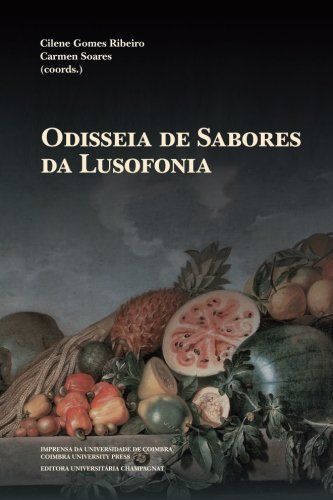
Odisseia de sabores da Lusofonia
A presente obra dá conta de como o Património Alimentar do Mundo Lusófono (em especial de Portugal e do Brasil) resulta de uma verdadeira “odisseia” de sabores, pois assenta sobre as viagens (longas, incertas e, o mais das vezes, penosas) de portugueses para terras desconhecidas ou mal conhecidas — desde os tempos iniciais dos descobrimentos (sécs. XV–XVI) até os fluxos migratórios mais recentes (séc. XX). Em sua bagagem, os colonos e os emigrantes carregavam uma série de memórias identitárias (dentre elas, a gustativa). A respeito desses Novos Mundos, criaram uma série de expectativas, sem nunca deixarem de sentir certa nostalgia em relação ao local/cultura de origem. Assim, o livro começa por contemplar estudos sobre as raízes culturais greco-latinas e medievais da alimentação portuguesa, patrimónios alimentares levados do reino para os Novos Mundos. Seguem-se abordagens diversas sobre os encontros multiculturais ocorridos entre portugueses, brasileiros e outras populações. Começa-se com o diálogo estabelecido entre portugueses e africanos (sécs. XV–XVI). Sucedem-se reflexões tanto sobre a integração e acomodações do receituário português na América Portuguesa (sécs. XVI–XVII) como sobre a introdução de produtos das Américas no receituário conventual português da Época Moderna. Reúnem-se, ainda, estudos sobre a história da alimentação no estado do Paraná, o relevo da gastronomia regional na história da alimentação brasileira contemporânea e uma revisitação ao capítulo “Ementa Portuguesa” da História da Alimentação no Brasil, de Câmara Cascudo. The book investigates how the Portuguese Culinary Heritage (mainly from Portugal and Brazil) offers a wide range of tastes originating from the travels (long, uncertain and frequently painful) of the Portuguese to unknown or only scantily-known lands from the start of the Discovery Era (15th and 16th centuries) to the most recent migratory waves (20th century). Settlers and emigrants carried in their trunks a wide range of souvenirs, among which culinary recipes may be included. Although the new lands produced high expectations, homesickness with regard to their culture and costumes was never absent. The book is divided into two parts. Part I deals with the Greco-Roman and Medieval cultural roots of Portuguese food (Chapters 1 and 2). Part II, with nine chapters, deal with the multicultural encounters between Portuguese, Brazilians and other populations. The Portuguese-African dialogue started in the 15th and 16th centuries (Chapter 3). Two complementary comments are discussed: the first comprises the integration and adaptation of the Portuguese Food Recipes in Portuguese America of the 16th and 17th centuries (Chapter 4) and the second deals with the inclusion of products from the Americas during the Modern Age (Chapter 5). Five studies are devoted to the history of food in the state of Paraná (Supply in Chapter 6; Gender Issues in Chapter 7; Immigration in Chapter 9; Regional Recipes in Chapter 10), to the regional gastronomy in contemporary Brazilian food history (in the state of Piauí in Chapter 11) and to a revision of the chapter called ‘Ementa Portuguesa’ from Câmara Cascudo´s book História da Alimentação no Brasil (Chapter 8).